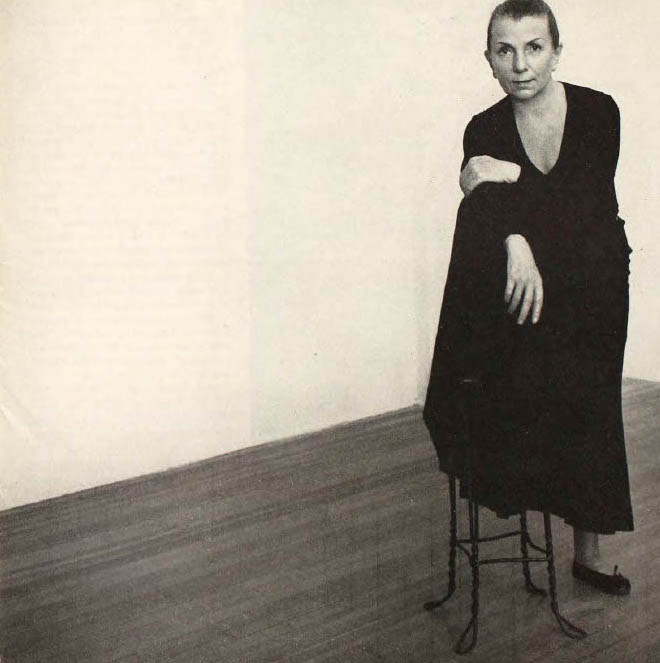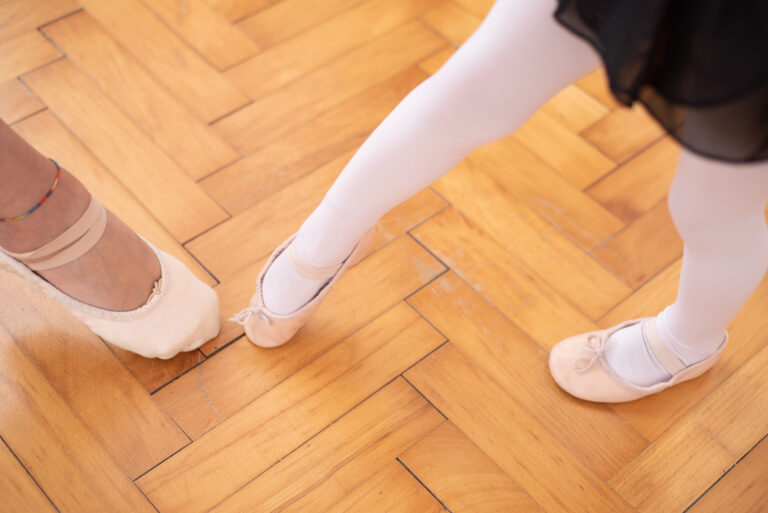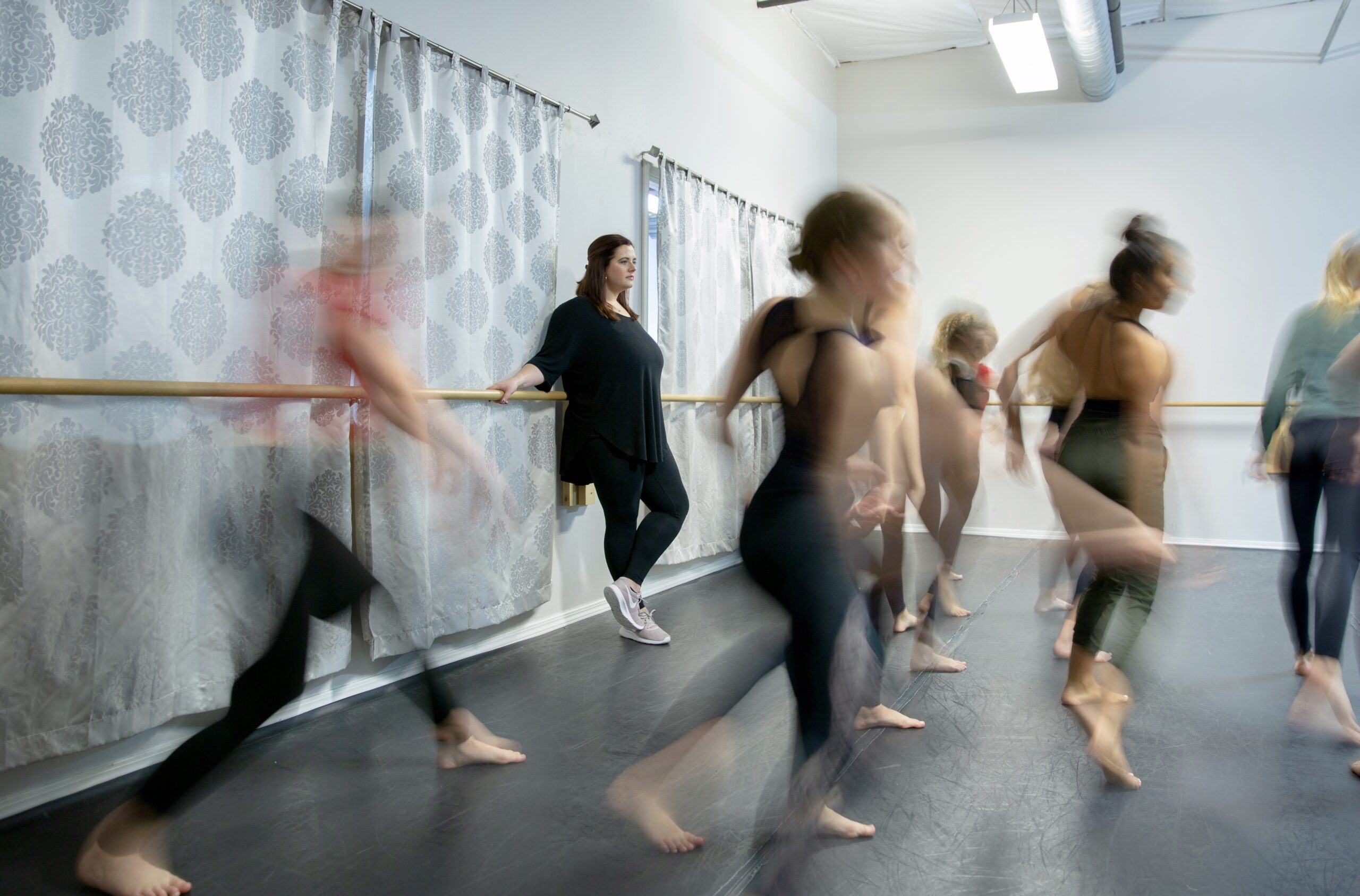
Some elements of dance technique are purely a matter of aesthetics. Others are a matter of preventing injury, and some are a combination of both. Teaching dancers to avoid sickling is a great example of one of these dual-purpose technical concerns.
If a dancer is in the habit of sickling their feet in non-weight-bearing positions, such as in battements or développés, the issue is mostly an aesthetic one. But if that student is in the habit of sickling in relevé or when jumping, this puts them at serious risk for injury—ankle sprains and related lower-body injuries in particular. These expert tips will help you parse when a good cue or exercise is all your student needs and when it’s time to refer them to a physical therapist.

Finding the Right Cue
Lauren Setten, the director of jazz, lyrical, and contemporary at Fircrest, Washington-based Image Studio of Dance, says she most often sees sickling among younger or newer students, who are still working on mastering basic elements of technique. For these dancers, learning not to sickle is mostly a matter of building awareness. When the foot is coming off the floor, Setten says to dancers: “Use your big toe like it’s your pointer finger. The direction that you want your leg to extend is the way your big toe should be pointing.”

In relevé, some teachers and physical therapists cue dancers to think of keeping their weight over their first and second toes; others say second and third toes. Depending on the student, one cue might work better than the other. Another image that can be helpful is to “think of the heel pulling straight up behind the glutes,” says Emily Becker, DPT, owner of Arts and Athletics Physical Therapy in St. Johns, Florida. This may be especially useful for students who are sickling because they are trying to “force” their arch to make it look higher, a common source of a sickling habit.
One more image to try: When you turn a doorknob with your right hand, the pinky finger spirals down and the thumb spirals up. Visualizing this can help initiate the foot off the floor with proper alignment and prevent sickling, says Kerry Shea, a ballet coach and master Pilates instructor based in Charlottesville, Virginia. “For instance, from fifth position, when the front foot leaves the floor to coupé, it spirals pinky toe back as the inner heel goes forward,” says Shea. “It’s important to correct a sickled foot at the start of the movement, not once you’ve arrived at the end point of the movement.” A poorly fitted pointe shoe can also cause sickling, Shea adds.
Working It Out
Most of the time, says Becker, sickling is caused by hypermobility of the foot and ankle. Sometimes, stiffness in the big-toe joint can contribute, because the flexor hallucis longus—the muscle that points the big toe—is often overworked in dancers, and tightness in that joint can lead the dancer to roll their weight out toward the pinky toe. Shea suggests gently mobilizing this joint by placing a racquetball ball under the big toe with the foot on the floor, and then slowly lifting and lowering the heel.
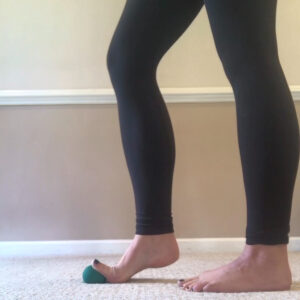
However, the most important fix for sickling is usually strength. That doesn’t just mean foot and ankle strength, though that is important, says Brittney Mims, DPT, founder of Mims Method in New York City. “It’s important to address the whole chain,” she says. For a start, make sure that students have a good cross-training routine to strengthen their legs, hips, and core, especially any students with a history of ankle sprains. “The biggest risk factor for injury is a previous injury,” says Mims.
In terms of foot- and ankle-specific exercises, “I love something that gives dancers a little proprioceptive feedback,” says Mims. She suggests starting with an exercise many dancers may already know: Relevés performed while holding a ball between the heels. Any sickling will result in dropping the ball, so the feedback is instant. Setten likes to start her students with two-legged relevés, then progress to single-leg relevés at the barre, and eventually move to slow, controlled, single-leg relevés in center. But during class, keep it to just a few repetitions on each side—you want students to feel their muscles working, but you don’t want to completely burn out their calves in the middle of class.
Many dancers already have a TheraBand or similar resistance band lying around, and this can be helpful too. Shea suggests anchoring the band to something low and stable, like the leg of a heavy table, and doing relevés with the band around one foot, facing all four directions. Again, this helps give the dancer proprioceptive feedback and builds their awareness of proper placement in relevé.
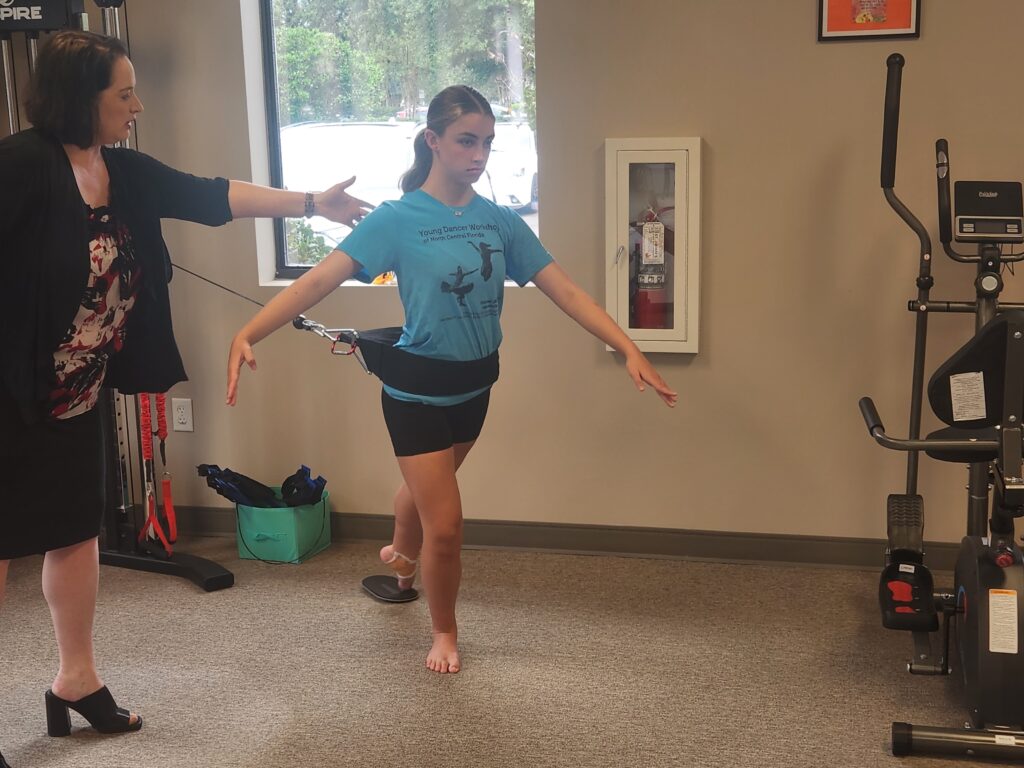
Becker recommends an exercise she calls “squat tap-outs.” Tie your band into a loop and place it around the feet. Starting from parallel plié, keep one side steady and rotate the other foot out and in. This works the foot evertor muscles, which resist sickling, as well as the hip external rotators, where weakness can also contribute to sickling.
And remember, says Mims: Any dancer who is experiencing pain, or feeling especially nervous in balances or jumps, should be referred to a physical therapist for more in-depth evaluation.


